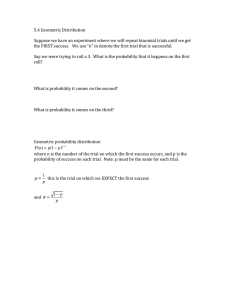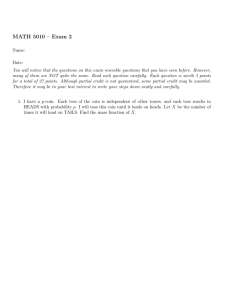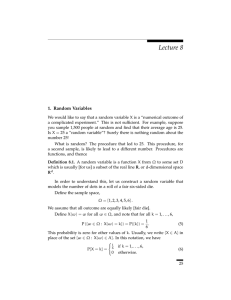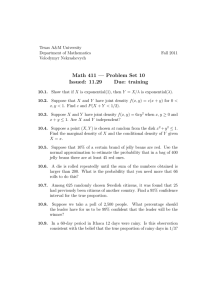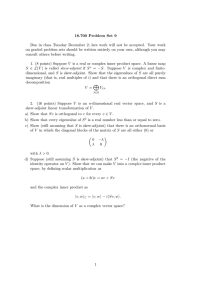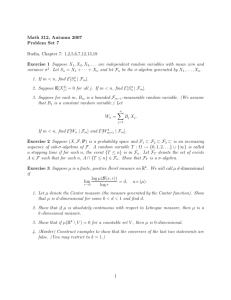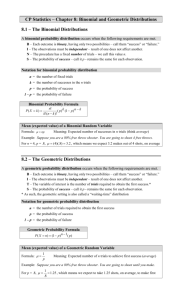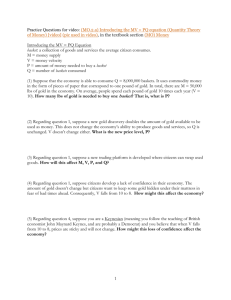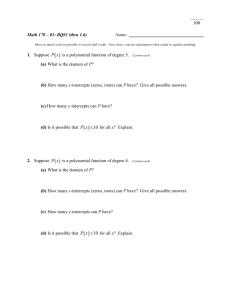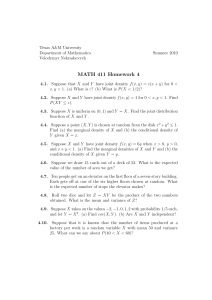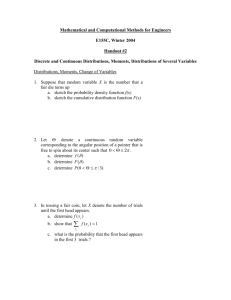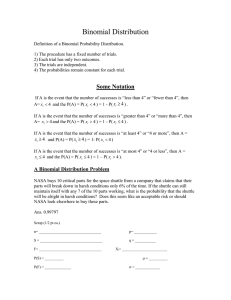Suppose the random variable X = the number of
advertisement
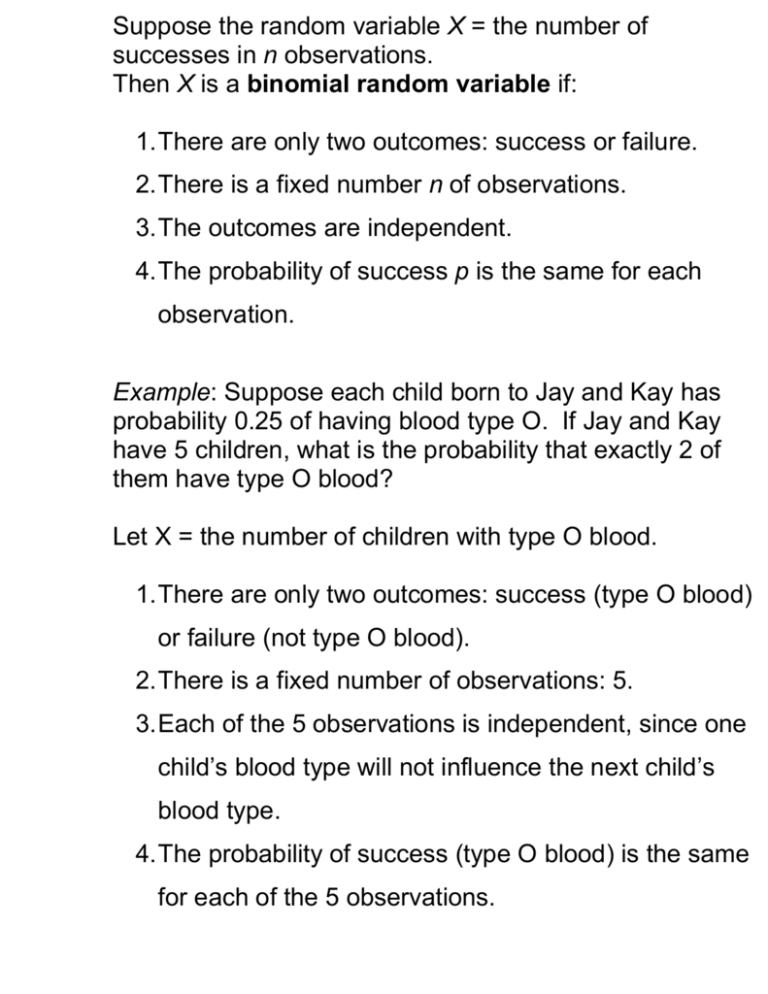
Suppose the random variable X = the number of successes in n observations. Then X is a binomial random variable if: 1. There are only two outcomes: success or failure. 2. There is a fixed number n of observations. 3. The outcomes are independent. 4. The probability of success p is the same for each observation. Example: Suppose each child born to Jay and Kay has probability 0.25 of having blood type O. If Jay and Kay have 5 children, what is the probability that exactly 2 of them have type O blood? Let X = the number of children with type O blood. 1. There are only two outcomes: success (type O blood) or failure (not type O blood). 2. There is a fixed number of observations: 5. 3. Each of the 5 observations is independent, since one child’s blood type will not influence the next child’s blood type. 4. The probability of success (type O blood) is the same for each of the 5 observations. Suppose the random variable X = the number of trials required to obtain the first success Then X is a geometric random variable if: 1. There are only two outcomes: success or failure. 2. The variable of interest is the number of trials required to obtain the first success. 3. The outcomes are independent. 4. The probability of success p is the same for each observation.

